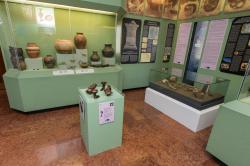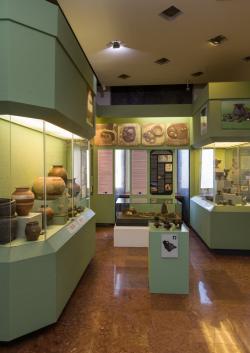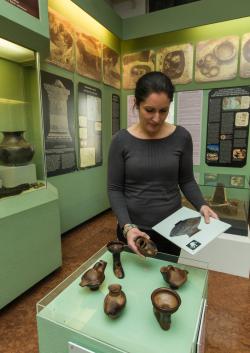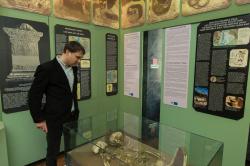Hogyan készül - lépésről lépésre
1st Step:
Choosing the topic and the installation that fits its purpose
We would have liked if visitors kind of “bump into” at least one of the five installation on one of the floors of the museum (the museum has four floors in total). Moreover, the permanent exhibition “Ancient peoples, antique cultures” is one of the least interactive ones, since it was already built around the early 90s. In addition, it has an exact design and it is quite densely furnished. There are nursing vessels included, both from the Bronze Age and ancient times. It shows that this type of tool, that helped feeding the babies in the early times, preserved its tradition for thousands of years.
Furthermore, around the same time, a temporary exhibition of a mother and her child’s tomb artefacts – a mother and child closely embracing each other – was added. They tried to find a permanent presentation spot for the artefacts. Thematically, the placement of the grave had to be next to the nursing vessels, so this is how the place and the subject were put together.
2nd Step:
Collecting materials
At each installation, we closely worked together with the curators of the permanent exhibition. In these cases, the materials of content and descriptions about the Bronze Age artefacts were given by them. Furthermore, we got materials and information on the historical background of maternal and infant mortality. Additionally, we had to collect information on the current situation of these issues.
3rd Step:
Planning
The installation had to fit in the permanent exhibition organically, so we worked with the original graphic designer of the exhibition. With colours we highlighted and emphasized the descriptions about the topic of the project and the interactive stand was consciously placed in the way of the visitor, so he/she will come close to it automatically and look at it. It also has a distinctive size compared to everything else in the room.
4th Step:
Production
A new interface had to be created for this installation, so we covered a window in the exhibition room. Carpenters made these stands; the glass cabinet of the grave was given. We printed posters for the walls and the written surface of the tool was printed on plastic sheets.
5th Step:
Implementation
The transportation of the grave was done by an artefact transporter. The museum staff helped with the installation on the walls.






















